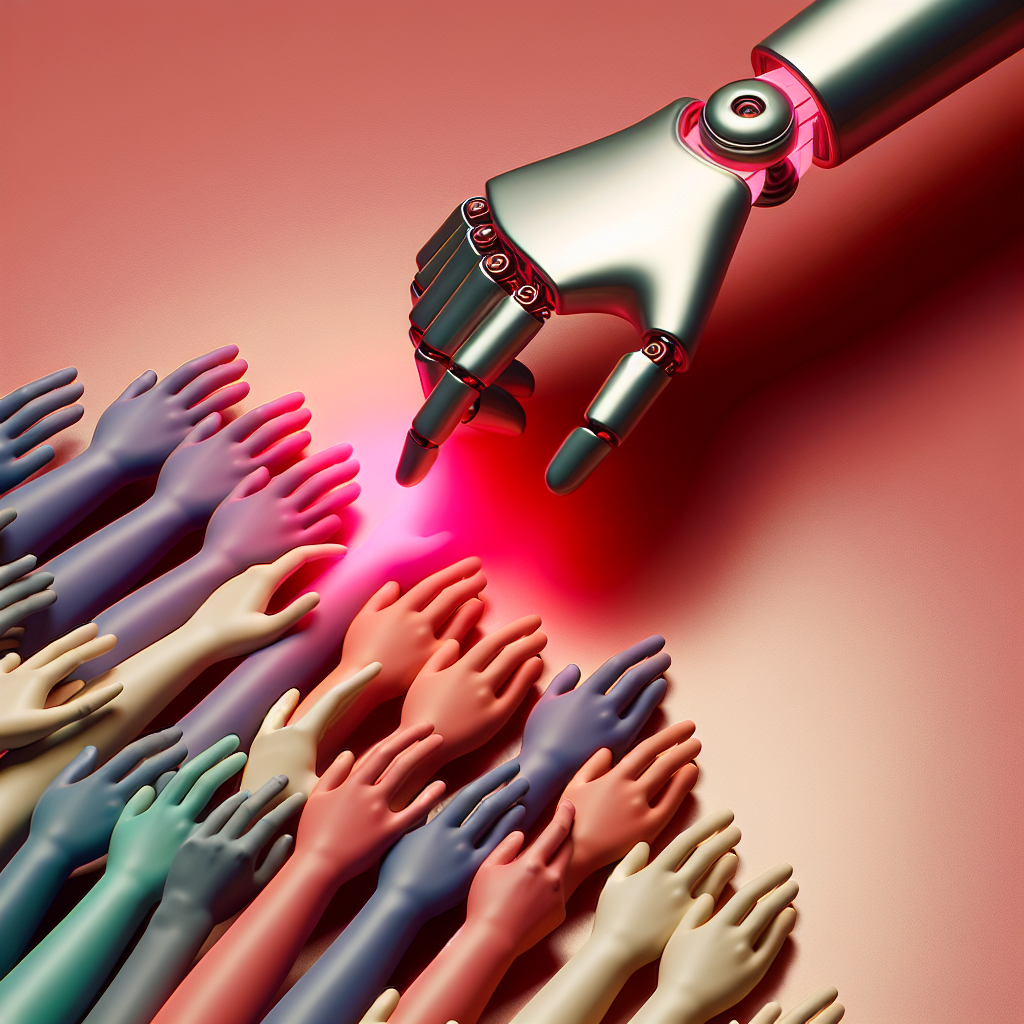-
Table of Contents
- The Hidden Danger of AI Decision-Making: Eroding Our Ability to Choose Independently
- Understanding AI Decision-Making
- The Erosion of Independent Decision-Making
- Dependency on AI Recommendations
- Impact on Professional Judgement
- Automated Decision-Making in Governance
- Case Studies Highlighting AI’s Impact
- Case Study 1: AI in Recruitment
- Case Study 2: Autonomous Vehicles
- Statistical Insights into AI Adoption and Risks
- Strategies to Mitigate Risks
- Conclusion: Balancing AI Advantages with Human Autonomy
The Hidden Danger of AI Decision-Making: Eroding Our Ability to Choose Independently

As artificial intelligence (AI) continues to evolve and integrate into various aspects of our lives, from personal assistants to complex decision-making systems in business and government, the implications of its influence are profound. While AI offers numerous benefits, such as increased efficiency and the ability to analyze vast amounts of data, there is a growing concern about its impact on human autonomy and the ability to make independent choices. This article explores the hidden dangers associated with AI decision-making and how it might be subtly eroding our capacity for independent thought and decision-making.
Understanding AI Decision-Making
AI decision-making refers to the process by which machines or systems make choices based on data analysis without human intervention. These decisions can range from simple tasks like recommending a product to a consumer, to more complex decisions like diagnosing diseases or managing traffic flow in smart cities.
- AI systems analyze large datasets to identify patterns and make predictions.
- Machine learning algorithms adjust their parameters based on feedback to improve their decision-making over time.
- Decision-making AI is used in various sectors including healthcare, finance, transportation, and security.
The Erosion of Independent Decision-Making
As AI systems take on more decision-making tasks, there is a significant risk that individuals and organizations may become overly dependent on automated systems, potentially leading to a decline in human critical thinking and decision-making skills.
Dependency on AI Recommendations
One of the most visible areas where AI impacts our decision-making is in the realm of personal and consumer choices. Algorithms determine the news we see, the products we buy, and even the music we listen to. This can lead to a phenomenon known as “filter bubbles” where AI reinforces existing preferences and potentially limits exposure to new ideas and diverse perspectives.
Impact on Professional Judgement
In professions such as medicine, law, and finance, AI tools are increasingly used to assist with diagnostics, legal research, and investment decisions. While these tools can enhance efficiency and accuracy, there is a concern that reliance on AI could diminish the professional judgment of practitioners over time.
Automated Decision-Making in Governance
AI is also being integrated into public decision-making processes. For example, predictive policing tools are used to allocate law enforcement resources, and algorithms may determine eligibility for public benefits. These systems can introduce biases and reduce the transparency and accountability of governmental decisions.
Case Studies Highlighting AI’s Impact
Case Study 1: AI in Recruitment
Several companies now use AI-driven tools to screen job applicants. These systems analyze resumes and even evaluate video interviews. While they can help manage large volumes of applications, there have been instances where such systems perpetuate bias, such as favoring certain demographics over others based on historical data.
Case Study 2: Autonomous Vehicles
The development of self-driving cars presents a literal and metaphorical example of AI decision-making. These vehicles must make split-second decisions that can have ethical implications, such as choosing between two potential accidents. The reliance on algorithms for such critical decisions highlights the tension between human oversight and AI autonomy.
Statistical Insights into AI Adoption and Risks
Recent studies and surveys provide insight into the adoption of AI and the perception of its risks:
- A survey by Pew Research found that 58% of Americans believe that AI needs to be carefully managed or restricted.
- According to a report by McKinsey, 30% of tasks in about 60% of occupations could be automated, which shows the potential for significant reliance on AI in the workplace.
- Research by MIT has highlighted instances of racial bias in facial recognition software, demonstrating the potential ethical risks of AI decision-making.
Strategies to Mitigate Risks
To address the challenges posed by AI in decision-making, several strategies can be implemented:
- Enhancing AI transparency by requiring clear explanations of how decisions are made.
- Implementing robust AI ethics guidelines to govern the development and use of AI technologies.
- Encouraging interdisciplinary approaches that combine AI with human oversight.
- Promoting digital literacy to help individuals understand and critically assess AI recommendations.
Conclusion: Balancing AI Advantages with Human Autonomy
The integration of AI into decision-making processes offers undeniable benefits, such as increased efficiency and the ability to process and analyze data at an unprecedented scale. However, it also poses significant risks to our ability to make independent choices. By understanding these risks and implementing strategies to mitigate them, we can harness the benefits of AI while maintaining essential human oversight and ethical standards. The future of AI should be one of partnership between humans and machines, rather than a replacement of human judgment. This balance is crucial for preserving our fundamental capacities for choice and autonomy in an increasingly automated world.

